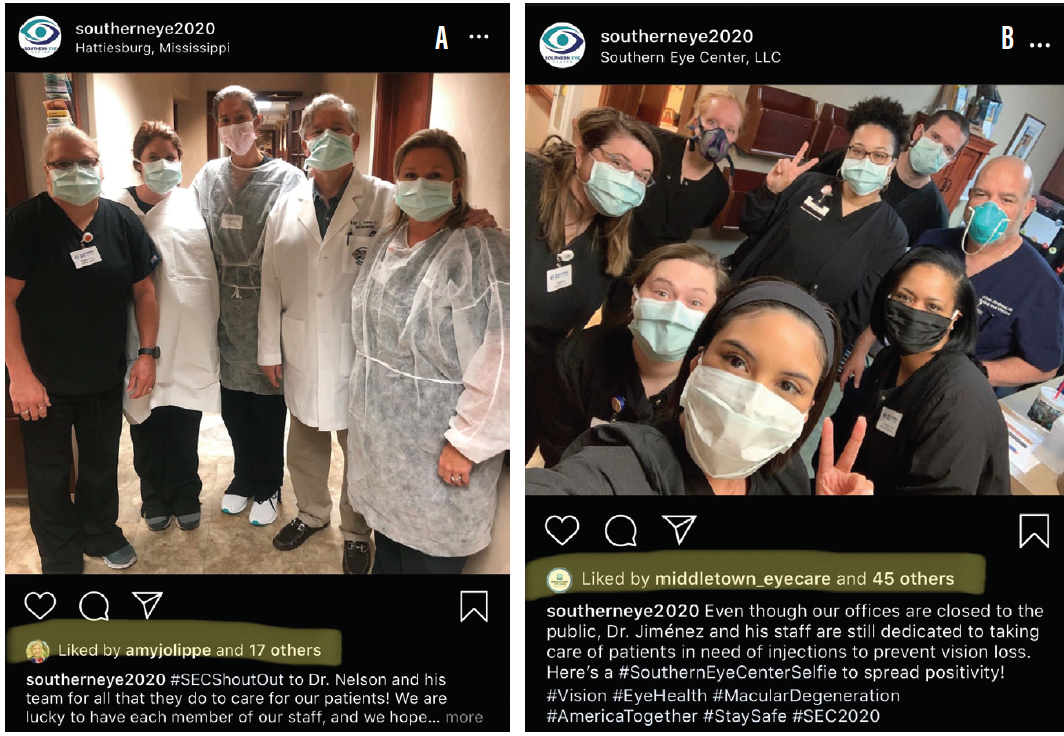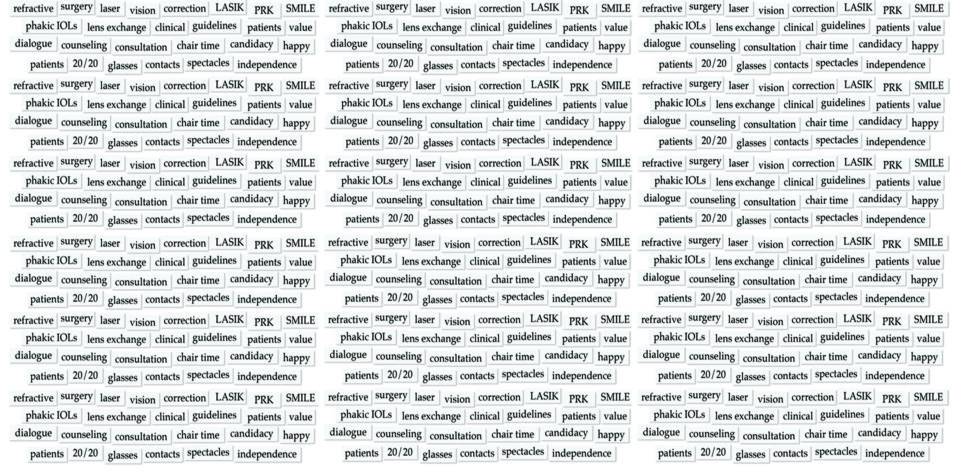
Document, don’t create.” This is one of my favorite quotes from entrepreneur and social media guru Gary Vaynerchuk. We often feel the daunting need to create content for our social media posts. But who has time for that?
This is why I recommend the Documentation Method as a content strategy for Facebook and Instagram. The premise is simple: You don’t have to create content as long as you document what’s happening in your practice and share it with the world. Your patients are on social media. This simple approach can help you reach them while saving you time, effort, and money.
GETTING STARTED
Three of the easiest ways to use the Documentation Method are outlined here. Each can be used to capture social media content that’s better, more engaging, and more shareable than what you might pay a top agency to create for you. I’ll even show you how to leverage the Documentation Method to get your patients to do your marketing for you.
TELL STORIES
Patient Stories
This is actually the easiest to do because new stories come into your practice every single day. Each patient has an interesting aspect to their story. And not only that, but you’re in the process of writing yourself into the story. You are literally an inflection point in this person’s life. When you help someone achieve 20/20 vision, you’ve taken that person from frustration to freedom.
Your Origin Story
Why do you focus on vision correction? Why did you open your practice? Why did you introduce this new technology? It’s nice for your prospects to know that you did something, but it’s much more impactful to share why you did it.
Stories of Your Practice
Do you take an annual mission trip? Donate glasses to the Lions Club? Give away treatments to police, military, moms, teachers, anyone? Volunteer as a team at the food bank every Thanksgiving? These are stories you can document and share to show prospective patients what you’re all about.
No. 1: Stories are everywhere, you just have to tell them. I’m sure patients tell you all the time how much they love your practice. But the aspect they love the most? The results your practice helps them achieve. So the question is: How can you document and showcase these results? The best and easiest way is through stories.
People love a good story. Tiger King, Real Housewives of Orange County, The Last Dance. Why are these all hit Netflix shows? They are documentations of interesting people doing interesting things, delivered for your viewing pleasure.
There are three different types of stories that are worth documenting for your audience (see Tell Stories). And when I say document, I don’t mean hire a film crew or professional photographer. Those are fine in certain instances, but for everyday documentation, a simple point-and-shoot camera or even a decent smartphone camera will do the trick. A few photos, a short video, and you’re good to go.
No. 2: Showcase your personality. Until a few years ago, people couldn’t engage with brands in a casual manner. Today, you can comment on a post from your favorite platinum-selling band, and there’s a decent chance they’ll comment back to you. What a time to be alive.
You’ve probably heard the saying, “People don’t do business with companies, they do business with people.” Your prospects want to know there’s a live human being behind the curtain. This is where your personality comes in.
There are two main ways to showcase your personality on social media: imagery and text. Look at the examples I pulled from two strong refractive surgery social media pages that are great examples of the Documentation Method.
Figure 1 show posts from Southern Eye Center. Figure 1A, which features a standard image of a group of team members, received 18 likes. Figure 1B was taken in selfie mode, with team members gathered around the camera displaying energy and excitement. This one had 46 likes—250% more than the other image.

Figure 1. Southern Eye Center team members featured on the practice’s Instagram account. Different tactics generate different levels of interaction on social media. The standard group photo (A) received 18 likes while the selfie (B) received 46.
Figure 2 is from Williamson Eye Center, another practice that does a great job on social media. Figure 2A, a standard doctor-and-patient post, had 23 likes. In Figure 2B, you see a selfie of two doctors trying to make coffee. They both have expressive looks on their faces. This is a personality-packed post, and it has 85 likes, almost four times more than the example in Figure 2A.

Figure 2. Williamson Eye Center’s standard doctor-patient photo (A) generated less engagement on social media than a personality-packed photo (B).
Now, to be clear, this isn’t an exact science. And engagement isn’t the be-all and end-all when it comes to social media. But engagement is a signal of what types of content resonate with people. These examples show that the way you document your activities matters. The more personality you show, the more fun you’re having, the more people get into it. This helps to spread your message.
PATIENT PROMOTION
Make social media posts targeted at your happy patients. So many social media posts are geared toward new prospects: “Come get LASIK.” “Here’s a LASIK benefit.” “Check out our LASIK promotion.” Those are fine, but you also want to speak to the folks who have already had a treatment.
For example, you could post: “What’s your favorite thing to do in the summer now that you’ve had LASIK at XYZ Laser Center?” And then let your happy patients load up the comments. At first glance, a post like this may not seem to relate to your prospects who haven’t had treatment yet. But when prospects see this post, and 20 comments from 20 happy patients talking about 20 different awesome activities they love to do, this is huge social proof.
Make it easy as pie for patients to share their journey to 20/20. It’s not the patient’s responsibility to come up with ways to promote you. That’s your job. Thankfully, you can put simple systems in place to make it turnkey for patients to sing your praises. A few examples follow:
- Put a table-topper in your prep areas on surgery day that says, “Happy LASIK Day! Scan this QR code to check in on Facebook.”
- Set up a selfie station with fun signs like “20/20 in 2020” and “I ♥ my Laser Eyes!” that patients can use to pose with their doctor after surgery.
- Employ a review marketing system that makes it dead-simple for the patient to get to your Google My Business listing to leave you a 5-star review.
- Document your patients’ surgery day with photos, and give them to the patient in a digital format.
No. 3: Use social proof to leverage your audience and get patients to work for you. Although the use of social media for marketing is relatively new, social proof has been used for decades to build big brands. It’s why we take interest in an ice cream shop that has a line out the door, or hit the most popular golf ball used on the PGA tour, or purchase the Yeti cooler with the most 5-star reviews on Amazon.
Social media can provide you with the perfect avenues to leverage social proof. Through social media, you can put your patients to work as part of your marketing army.
The most underutilized opportunity is not how practices promote themselves on social media, but how they activate their patients to do the promotion for them. If you’re not doing this, you’re missing a huge potential benefit that social media can provide.
Why is patient promotion so powerful? When a message transfers friend-to-friend, it flies under what I call people’s marketing radar. That is, people don’t see it as an advertisement. Rather, it’s an introduction to the brand from a trusted source, whether friend, family, or coworker. Even the best marketing message from a practice can’t trump the authentic excitement of a friend sharing their vision correction journey.
Activate your patients to do your marketing for you using some of the tactics outlined in Patient Promotion.
A quick tip for capturing photos: In addition to taking photos with your practice’s camera or phone, do your best to capture content with your patients’ phones as well. You want your photos in their photo streams, ready to be stumbled upon every time they scroll their images.
It’s as easy as, “Hey, let’s take that pic with your phone too!” *click* “Awesome! Be sure to tag us when you post that on your Instagram!”
WHAT’S NEXT?
Even though we’ve barely scratched the surface, these examples of the Documentation Method should give you new ideas to expand your practice marketing on Facebook and Instagram in quick and easy ways.
But maybe you have read all this and you’re thinking, “This all sounds great, Troy, but I don’t know who should actually do this in my office.” This is your next step. Everything I’ve outlined here can help you gain more reach, build more trust, and attract more patients on social media. But someone has to actually do it.
And I recommend that someone, as in one single person, should own this process. You want one person in charge of documenting the content, engaging patients on surgery day and at postoperative follow-ups, and being on the lookout for fun photo ops in the office. In many cases, that person is already in your office and is great at social media on a personal level. They understand the language, the vibe, the lingo of the channels. They understand what gets engagement because they live it every day.
Figure out who that person is. Give them this essay to execute and a media release form for patients to sign. And run circles around your competition.


